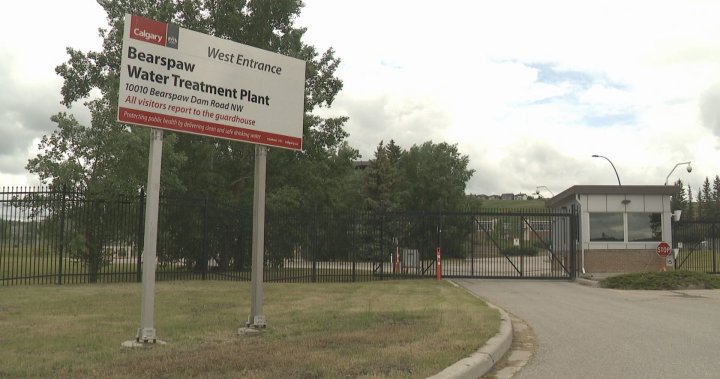Calgary officials are dealing with a major issue following a catastrophic feeder main break at the Bearspaw Water Treatment Plant, which has disrupted the flow of 60 per cent of the city’s treated water. As a result, the city is exploring alternative ways to move water from the plant, including using above-ground pipes as a temporary solution. However, experts like Tricia Stadnyk, the Canada Research Chair in hydrologic modelling, have raised concerns about the security and potential contamination risks of this overland solution, as any compromise in the pipe could pose health and safety risks due to the drinking water supply.
The city has also been engaging with the private sector to find solutions, collaborating with professionals from the oil and gas industry to explore options for resolving the water distribution system issue. Kerry Black, an assistant professor at the University of Calgary’s Schulich School of Engineering, emphasized the importance of learning from other industries about pipeline integrity, although he acknowledged that public water infrastructure is not as profitable as other sectors. However, public criticism over the projected repair timeline has surfaced, with concerns about the lengthy process impacting the city’s water supply.
Tricia Stadnyk highlighted the differences between transporting oil and water, noting that water is a consumable good with stringent health and safety implications. She stressed the necessity of ensuring the integrity of the water distribution system, even after repairs are completed, to prevent any potential contamination that could compromise Calgary’s high-quality drinking water supply. Stadnyk emphasized the need for due diligence in maintaining the water system’s security, which may require additional time and resources to address any vulnerabilities.
The inspection of the remaining 300 meters of the damaged pipe has been completed, with no new issues identified. Despite this, the full repair process is still expected to take three to five weeks to be completed. The city has reported that the Glenmore Water Treatment Plant in southwest Calgary is currently providing just enough water to meet demand, and the proposed interim overland solution would only be used as a backup plan. Even after repairs, the system will need to undergo a flushing process to remove any contamination that may have entered the pipeline during the breakage.
Overall, Calgary officials are working diligently to address the water distribution system issues caused by the feeder main break and are considering various solutions to restore the flow of treated water to the city. With the support of experts and collaboration with professionals from the private sector, the city is exploring ways to secure the water supply while ensuring public health and safety remain a top priority. Despite challenges and concerns, efforts are being made to mitigate the impact of the break on Calgary’s water infrastructure and protect the integrity of the city’s drinking water supply for its residents.


